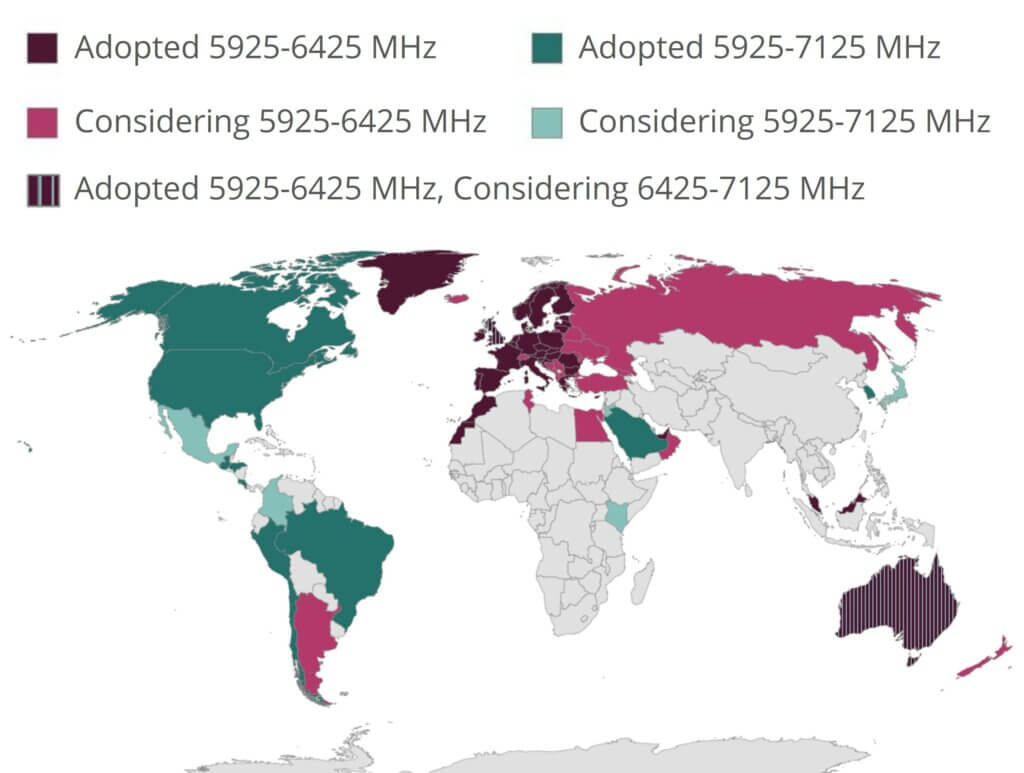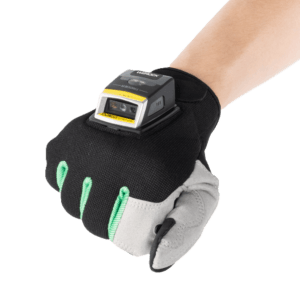Reliable as well as high-performance WLAN is nowadays part of the indispensable basic supply of industrial companies and is thus a decisive factor in the development of digitalization. This guarantees effective communication channels in companies and generates significantly higher productivity.
WLAN, abbreviation for “Wireless Local Area Network”, is the umbrella term for this wireless technology. In contrast, Wi-Fi refers to a type of WLAN that stands for a certificate issued by the Wi-Fi Alliance according to the IEEE 802.11 standard. In conclusion, every Wi-Fi is a WLAN, but not every WLAN is necessarily Wi-Fi certified. For a product to be considered Wi-Fi certified, it must first have undergone rigorous testing in independent test laboratories. Only after successfully passing the tests does the manufacturer or seller receive the right to use the “Wi-Fi Certified” seal for the product.
Challenges in industrial WLAN use
The requirements for WLAN connectivity in industrial environments are much higher than those in normal everyday environments. The need for a stable Internet connection is particularly high due to intensive use in purchasing, production, maintenance, transportation and other departments: For example, in large industrial companies or medium-sized engineering firms, hundreds or thousands of devices and machines must be connected to a WLAN network simultaneously. To ensure that all devices and machines can be operated in parallel and with optimum performance, a reliable network is absolutely essential. Translated with www.DeepL.com/Translator (free version)
Another challenge in industrial WLAN use is the large number of radio interference sources that are unavoidable, especially in industrial environments. Since these all operate in the same frequency range, there is often a great deal of interference.
Advantages of Wi-Fi 6
Thanks to the significantly expanded features of Wi-Fi 6 devices, the challenges described can be overcome well. These are devices that comply with the IEEE standard 802.11ax. In this Wi-Fi standard, the new technology called Multi User Orthogonal Frequency Division Multiple Access – MU-OFDMA for short – is available. This completely new type of data transmission is also the biggest advantage of IEEE 802.11ax. It divides a communication channel into up to nine sub-channels, which can be distributed to different participants. This helps to ensure that many clients can communicate with each other in the WLAN at the same time. The spatial distance between machines and devices located in the warehouse, for example, is also overcome by the new technology, because users at a greater distance are also supplied without any problems. This handles the huge number of connected devices and expands efficiency in environments with many users. As a result, enterprises can support new and emerging applications. Particularly relevant are applications that require a fail-safe data connection: Here, if disruptions occur, the connection must not crash. Translated with www.DeepL.com/Translator (free version)
In addition, Wi-Fi 6 offers significantly faster data transmission and fairer distribution of data rates among all subscribers compared to Wi-Fi 5. It enables WLAN clients to roam quickly between WLAN access points. The authentication process when switching access points is accelerated by already storing the credentials on the access points before authentication. This enables significantly higher-performance wireless communication, which can play a major role in automation and remote control in industrial and production environments. Translated with www.DeepL.com/Translator (free version)
Innovations in Wi-Fi 6E
Wi-Fi 6E, presented by Wi-Fi Alliance, is a new standard for the extension of Wi-Fi 6 (“E” for “Extended”). Wi-Fi 6E is based on all the existing features of Wi-Fi 6, but of course has many new strengths. One of the most important new features is in its frequency spectrum. To understand the improvement, let’s first take a look at the frequency spectrum of older Wi-Fi generations. The Wi-Fi 5 operates on the 5 GHz band, while the Wi-Fi 6 operates on 2.4 and 5 GHz bands. The two frequency bands are quite busy: Many other devices also operate there, such as surveillance cameras, air conditioners, handheld scanners, Bluetooth devices, wireless remotes, etc. Thus, the above-mentioned problem of interference and radio interference between individual users easily occurs. This problem can now be eliminated with Wi-Fi 6E: The devices operate in the license-free frequency range of 6 GHz – a completely new, exclusive range. This means that Wi-Fi 6E devices enjoy a completely free and reserved space, so they are fully protected from all sources of radio interference in the environment.
The following world map shows which frequency bands are available in which countries or regions.

The lightning-fast speed of the Wi-Fi 6E is also worth mentioning. This is not only thanks to the expanded frequency capacity, but also the significantly increased number of channels: Thanks to the additional 1200 MHz spectrum, Wi-Fi 6E devices can operate in 14 more 80 MHz channels and 7 more 160 MHz channels. In comparison, the two predecessors – Wi-Fi 5 and 6 – bring 20, 40, 80-MHz channels.
Another advantage of Wi-Fi 6E is its lower latency. With Wi-Fi 6E products using the non-shared 6 GHz spectrum, this is up to 75 percent lower than with Wi-Fi 5.
You can see innovations of the Wi-Fi 6E compared to two older Wi-Fi generations in the table below.
| Wi-Fi 5 | Wi-Fi 6 | Wi-Fi 6E | |
|---|---|---|---|
| IEEE-Standard | IEEE 802.11ac | IEEE 802.11ax | IEEE 802.11ax |
| Erstveröffentlichung | 2013 | 2020 | 2020 |
| Frequenzband [GHz] | 5 | 2,4 und 5 | 6 |
| Modulations- und Multiplexverfahren | MU-MIMO + OFDM + BPSK / QPSK / QAM | OFDMA + QAM | OFDMA + QAM |
| Maximale Datenübertragungsrate (theoretisch) [MBit/s] | 6933 | 9608 | 9608 |
| Maximale Sende-/Empfangs-einheiten | 8 × 8 | 8 × 8 | 8 × 8 |
| Maximale Kanalbreite [MHz] | 160 | 160 | 160 |
The greater bandwidth, higher stability and lower latency of Wi-Fi 6E play an important role for industrial applications. Thus, on the one hand, the above-mentioned challenge can be met by the “digital twin”, and on the other hand, applications such as augmented and virtual reality, unified communications and cloud computing are effectively supported. The high network capacity and efficiency as well as the low latency are also significant for the demanding real-time applications that require high throughput and should provide seamless user experience, such as video streaming and video conferencing within a company.
The Wi-Fi 6E’s advanced features are also important for supporting industrial IoT equipment. Besides the additional frequency band, the advances in energy efficiency are also notable here. The Target Wake Time (TWT) feature is suitable for heavily loaded IoT networks where many different battery-powered devices and sensors are connected to the network. This feature brings huge improvements in battery life.
Playing in the top WLAN league with Rocktab U212 and U214
WEROCK offers high-performance, Wi-Fi 6E certified, mobile devices. Our fully ruggedized tablets Rocktab U212 and U214 bring faster and reliable data speed. Data rates of up to 2.4 Gbps are enabled. The features of the new WLAN technology significantly improve the user experience in dense deployments and support fast uploads and downloads, lower latency and longer battery life. Seamless switching between different access points is possible in just a few milliseconds without disconnecting.
More information about Rocktab U212 and U214 is available at https://www.werocktools.com/products/rugged-tablets/rocktab-u212/ and https://www.werocktools.com/products/rugged-tablets/rocktab-u214/
Conclusion and outlook for the future
What can be said is that the new generations of Wi-Fi 6 and 6E bring clear advantages in industrial environments. They enable robust Internet coverage with better stability, speed, interoperability and less interference – and with it countless opportunities for innovation. However, the rapid advancement of WLAN technology cannot be stopped: For some time now, an IEEE working group has been working on the successor to Wi-Fi 6E. According to current plans, the Wi-Fi 7 standard with the official designation 802.11be is to be adopted at the beginning of 2024. The new standard is fully backward compatible with the older Wi-Fi 4, 5, 6 and 6E: It operates in the 2.4, 5 and 6 GHz frequency bands.
Wi-Fi 7 will again significantly increase the speed of Wi-Fi 6: Routers can use up to 16 MIMO streams, which corresponds to a total speed of over 46 GBit/s. The new 4096-QAM modulation and the use of 320 MHz wide radio channels are responsible for this. Wifi 7 also improves Multi-User MIMO (MU-MIMO) so that the router can simultaneously exchange data with even more devices than Wi-Fi 6, again to increase speed.
The upcoming Wi-Fi standard will open up even more opportunities for industrial operations by supporting much higher device densities and more data-intensive real-time applications, for example.











